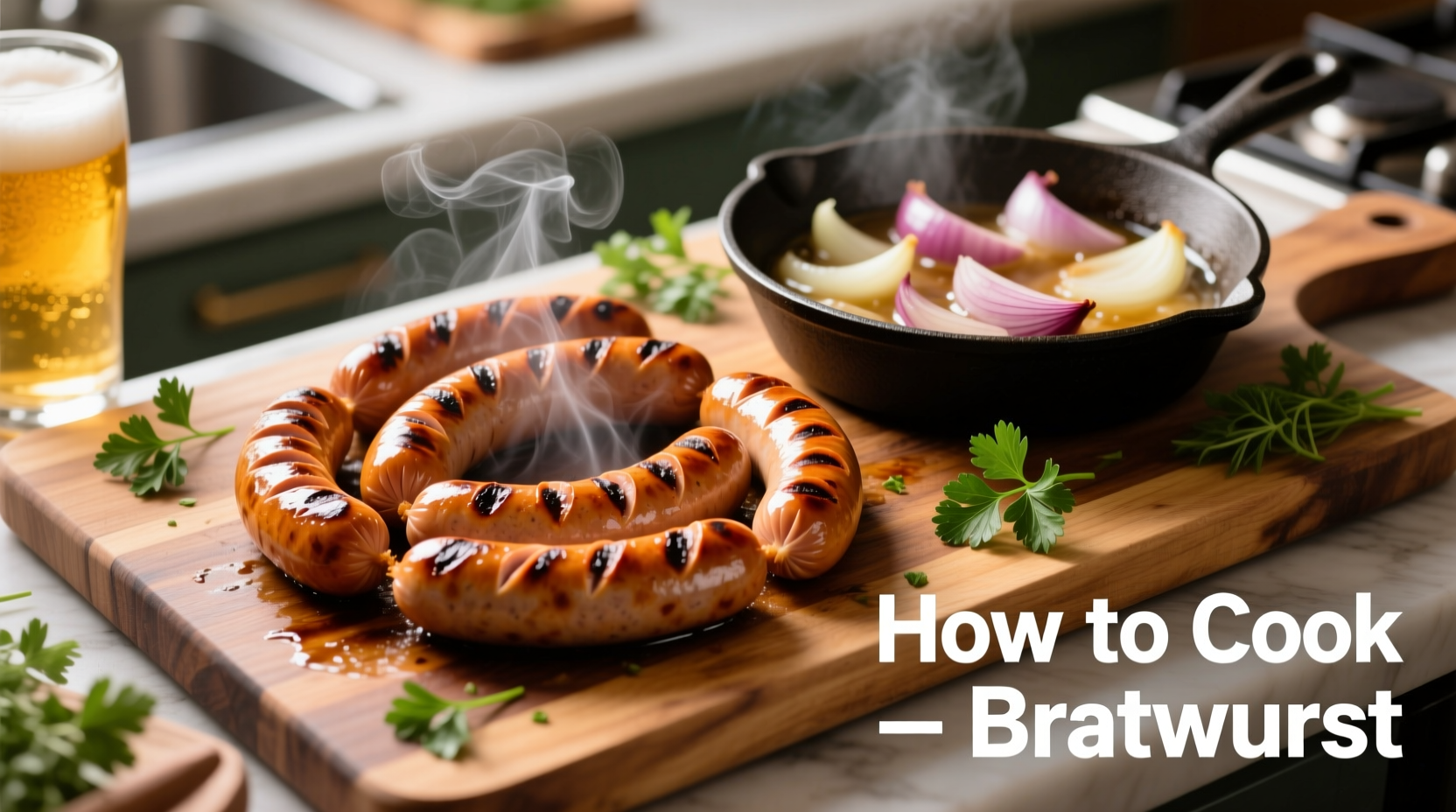The best way to cook bratwurst is to first parboil them in beer or broth for 10-15 minutes, then finish on the grill or in a skillet until they reach an internal temperature of 160°F (71°C), which typically takes 15-20 minutes. This two-step method prevents splitting while ensuring thorough cooking and maximum flavor development.
Mastering bratwurst preparation transforms this German sausage specialty from ordinary to extraordinary. Whether you're hosting a backyard barbecue or preparing a weeknight dinner, understanding the proper techniques ensures juicy, flavorful results every time. This comprehensive guide reveals professional methods backed by culinary science and traditional German preparation techniques.
Essential Bratwurst Cooking Methods Compared
Choosing the right cooking method depends on your equipment and desired flavor profile. Each technique offers distinct advantages for different occasions.
| Cooking Method | Prep Time | Cooking Time | Temperature | Best For |
|---|---|---|---|---|
| Grill (Two-Zone) | 10 min | 15-20 min | 300-350°F | Outdoor gatherings, smoky flavor |
| Cast Iron Skillet | 5 min | 12-15 min | Medium heat | Indoor cooking, caramelization |
| Beer Simmer + Grill | 15 min | 10-15 min | Simmer then 350°F | Traditional flavor, preventing splitting |
| Oven Roasting | 5 min | 20-25 min | 375°F | Batch cooking, consistent results |
Step-by-Step Bratwurst Preparation
Pre-Cooking Essentials
Before heating your cooking surface, proper preparation ensures optimal results. Never pierce bratwurst with a fork—this releases precious juices and fats that keep the sausage moist. Instead, use tongs for handling throughout the cooking process.
According to USDA Food Safety and Inspection Service guidelines, raw pork products like bratwurst must reach a minimum internal temperature of 160°F (71°C) to eliminate potential pathogens while maintaining optimal texture. This critical food safety threshold represents the culmination of decades of research into pathogen destruction temperatures.
The Two-Stage Cooking Process
Professional chefs and German culinary traditions favor a two-stage approach that combines gentle heating with finishing for perfect texture:
- Parboiling Stage: Simmer brats in beer, broth, or water with onions and spices for 10-15 minutes until they reach 140°F internally. This gentle heating prevents casing rupture during high-heat finishing.
- Finishing Stage: Transfer to medium-heat grill or skillet for 5-7 minutes per side until golden brown and internal temperature reaches 160°F.
This method addresses the fundamental challenge of cooking sausages: achieving thorough cooking without splitting the casing. The parboiling stage gently heats the interior while the finishing stage develops flavor and texture.
Visual Doneness Indicators
While a meat thermometer provides the most accurate measurement, these visual cues confirm proper doneness:
- Golden-brown exterior with slight charring in spots
- Firm but springy texture when gently pressed
- No pink color remaining in the interior
- Juices run clear, not pink

Avoiding Common Bratwurst Mistakes
Understanding these frequent errors prevents disappointing results:
The High-Heat Trap
Placing brats directly over high heat causes rapid casing expansion, leading to splits that release flavorful juices. Instead, maintain medium heat (300-350°F) throughout cooking. German culinary tradition emphasizes patience—bratwurst cooked too quickly loses its characteristic juiciness.
Skipping the Resting Period
Allow brats to rest for 3-5 minutes after cooking. This critical step lets juices redistribute throughout the sausage, preventing them from escaping when cut. Cutting immediately results in significant moisture loss—up to 20% according to culinary research from the Culinary Institute of America.
Traditional Serving Methods
In Germany, bratwurst traditionally appears in these presentations:
- Nürnberger style: Served with sauerkraut and potato dumplings
- Street food style: In a crusty roll with mustard and fried onions
- Beer hall classic: Accompanied by pretzels and potato salad
For authentic flavor pairing, select German-style mustards—sweet Bavarian mustard complements milder brats, while spicy Düsseldorf mustard enhances traditional recipes. Avoid ketchup, which German culinary experts consider inappropriate for quality bratwurst.
Food Safety Considerations
Raw bratwurst requires careful handling to prevent cross-contamination. The Food and Drug Administration recommends separate cutting boards for meat products and immediate refrigeration of leftovers within two hours. When transporting to outdoor events, keep brats below 40°F using insulated coolers with ice packs until ready to cook.
For those concerned about nitrate content in traditional bratwurst, the American Meat Science Association confirms that modern production methods have significantly reduced sodium nitrite levels while maintaining food safety standards. Natural alternatives like celery powder now provide similar preservation benefits without artificial additives.











 浙公网安备
33010002000092号
浙公网安备
33010002000092号 浙B2-20120091-4
浙B2-20120091-4